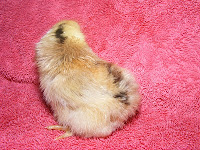
(Even things of somewhat "current events" come late these days...)
The weekend of January 22-24, the Northeast Organic Farmers Assoc. held it's winter conference in Saratoga Springs, NY. It was an overall excellent conference - lots of interesting speakers, good displays and vendors, and of course it's always nice to hang out with farmers...
I was able to attend with a New Farmer Scholarship (Thanks,
NOFA!) and tried to diversify my participation to fit the myriad of things that go on around here.
On Friday, I attended a workshop on growing cut flowers. (Madison has ideas about growing gladiolas and perhaps zinnias this year) I was hoping to at least get some good sources for glad bulbs - but wasn't able to find that out. Anyone got some good sources for healthy, inexpensive bulbs so she can try her hands at it? Interestingly, the speaker did use pigs in her land rotation, and I was pleased to hear that. I am gaining new appreciation for the little porkers after our experience this past Fall...not many notes or "take aways" from that lecture besides the idea of adding Cosmos as another good Market flower (beyond Zinnias and Sunflowers) and reminding me of Dainthus (Sweet William). In the past, we've grown this for decoration (and the smarmy reference to my DH) but it also makes a good cut flower, although you won't get blooms till year 2...
I did cut out of that class early, and scooted into one on organic beekeeping. The speaker, Russ Condrad, was great. You couldn't help but learn something as you listened, even if it was about the life of the bee (rather than care tips) and it got me all excited to see our hive wake up this Spring. I purchased his book , and it's a very good read.
I was really encouraged to hear so many ideas and tips for organic beekeeping, since we are an organic operation. I understand that man has taken the honeybee to its current spot on the brink of collapse and sometimes it is negligence not to apply supportive measures even if they are chemical, but I want to be doing everything I can in a natural way before that...
I cruised the vendor /shopping area and picked up a few seed samples, reading materials, and my prize purchase was my new hand tool, by Holdredge Enterprises, the
Hummingbird. Can't wait to be able to get out in the dirt and play...
Saturday morning I first attended a workshop on growing sunflowers for oil and fuel. Even though the speaker, Samuel Yoder, was addressing an audience way beyond my scope of mechanization and understanding, he was such an energetic speaker and so knowledgeable that I couldn't help but learn something. I feel much more knowledgeable about the soil preparation for our flowers, and am excited to try field peas in several areas of our farm as a short-term fertilizer...
The next workshop was by Michael Phillips. His workshop was entitled Home Orchard basics. (He also has a good book - just more than I can digest this year with everything else we are trying to pull together)
Again, a very good speaker and had way too much material for such a short workshop, but he focused on soil biology and that was a good infusion of information for me. We have a dozen or so apple trees on our property still producing, but struggling with less-than-optimum growing conditions. I learned a lot about what I can do to support them, as well as tips for our new stock coming in the Spring. The hardest part about attending all these great workshops was wanting to run right home and get going...and forgetting about the fact that it's January and 4 degrees outside...(sigh)
Saturday afternoon was spent learning how to sharpen hand tools (Mama wants a sharpening stone and some new bastard files now...) and ended the day learning about shared-use kitchens.
Sunday morning brought an additional surprise (beyond the excellent workshop on organic blueberries!) - a friend from high school and college plunked her butt down right next to us...(it wasn't till after the lecture that I caught up with her) - what an excellent way to end the conference by re-connecting with someone I have not seen in 25 years - and to find out she is only a few miles up the road. Add to that the fact that she raises
alpacas...and, aahhh...fiber bliss. Can't wait to go up for shearing in a few weeks....
The conference was really excellent - and I am brimming with ideas for the Spring...now if Spring would only get here!























